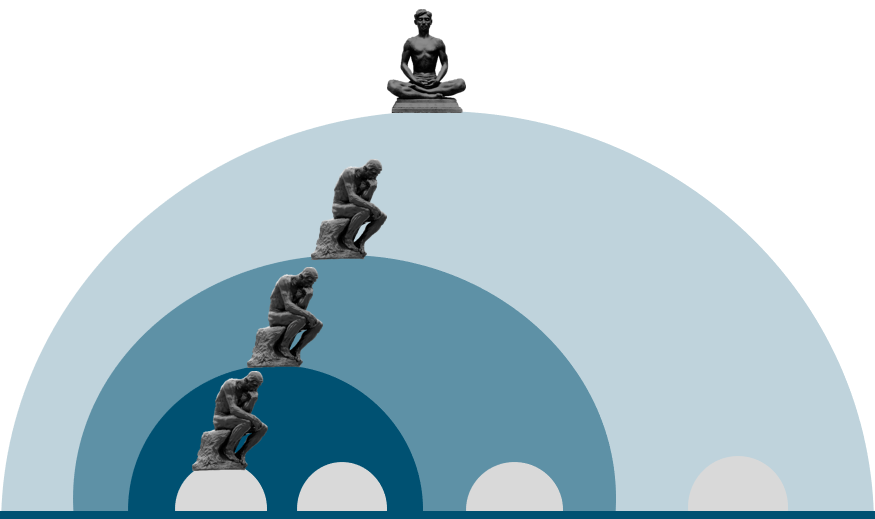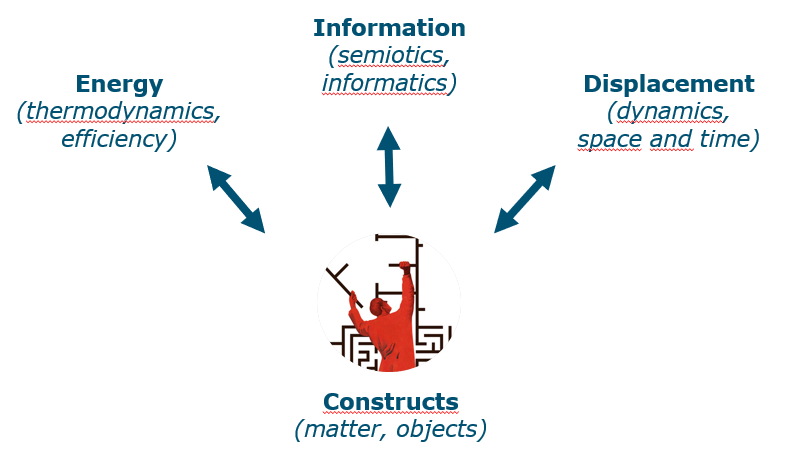Bios
I am attracted to fundamental questions in biology, philosophy and artificial general intelligence (AGI). This focus has inspired me to become the architect of a new complexity theory called the ‘Operator Theory’ (or OT), which is presented on this website.
I studied plant pathology at Wageningen University (Master’s degree 1986, Cum Laude), followed by a Ph.D in ecotoxicology (Wageningen University, 1993) and a postdoctoral position at the Free University (Amsterdam). The core ideas of the operator theory date from spring 1994. In 1996 our family moved to Denmark, where I worked on computer simulations of pesticide side effects (National Environmental Research Institute, NERI, Silkeborg). In 1999 we moved back to Wageningen, where I became team leader of an ecology group at Alterra. A few years later, I gave up team leadership to work more on the operator theory and related topics. Support from Alterra led to my second Ph.D (Radboud University Nijmegen, 2010) and the publication of two books. Since 2013 I have been in contact with the AGI company Mind|Construct. In 2016, I coached students during their Academic Consultancy Training (ACT). My work for Alterra ended in 2017. In 2018 I studied philosophy of science (Wageningen University), which led to the writing of the book ”ScienceBites“.
Mission and vision
Mission. My mission as a scientist is to contribute to a mechanistic bottom-up reconstruction of how the universe came to be, including the presence of humans on Earth. Such a reconstruction is a model. This model is based on knowledge of current systems and allows predictions of future types of systems. My mission follows two strategies:
- Start with what is accessible. In my view, it is worth starting with simple/local examples and limited/local theory. Each time a new aspect of organization is discovered in nature, an attempt can be made to incorporate it into an extended theory (as in the figure below). In this view, scientists extend the explanatory power of scientific knowledge by discovering new phenomena and constructing a more general theory (e.g., from Newton to Einstein, or from the history of the Netherlands to the history of the universe). Phenomena form the physical basis of science, the “facts”. Theory connects the facts.

- Work towards simplicity, scalability and generality. The value of simplicity is that if the core of a theory is simple but complete, it is easier to scale up the results and apply them generally.
Vision. It is my vision that ‘matter’ (as waves/particles) is the basis for all scientific work. Other aspects can be derived from such a material basis. How this can be imagined is shown in the figure below. All concepts in this figure refer to materially observable phenomena.

O-theory as inspiration
O-theory has inspired colleagues in a number of ways. Bouwine Bergsma used the theory in a children’s book ‘Hoe alles begon’ (How everything began) with beautiful illustrations by Adriaan Bijloo. Koert van Mensvoort also used the operator theory as inspiration for his book ‘Next Nature’. The painter Rudy Klomp refers to the O-theoy in several of his paintings (e.g. ‘Same difference (2013)’, ‘Evolutie Involutie’ (2014), ‘Rudy Klomp ontmoet Gerard Jagers op Akkerhuis en Jaap van den Herik (2016)’ ‘Horus of De Soortenstorm (2018)’).
Personal interests
Personal interests: I am actively involved in modern art, music, and the design of furniture. I love to spend quality time with our family.
Additional information about the OT can be found here.
